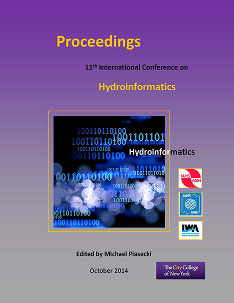Document Type
Presentation
Publication Date
8-1-2014
Abstract
The distribution of aquatic habitat at the organism scale, i.e. 1 by 1m or smaller is typically predicted from local physical characteristics of stream flow, bed, banks and sediment characteristics and a set of biological preference curves. The flow properties are typically predicted with numerical modeling whereas stream bed and bank characteristics defined from interpolated DEM generated by topographical surveys and field observations. Information on the effects of flow properties and streambed morphology due to numerical modeling dimensionality on aquatic habitat modeling is limited. Two-dimensional (2D) modeling is becoming the most popular method to map micro-habitat but its application is still limited to short reaches and at steady state conditions. One-dimensional (1D) modeling here used in their extended version as pseudo 2D are still applied in aquatic habitat especially where only cross-sectional information is available and the reach domain is several km long. Pseudo 2D modeling predicts velocities along the cross-section from uniform flow relationships and local depths from water surface elevation and local DEM of the streambed. Values between cross-sections are then interpolated. The advantage of pseudo 2D modeling over the full 2D is that it is very efficient and can run at the stream network scale under unsteady conditions. Thus there is still some usefulness in comparing the prediction of these two approaches. We hypothesize that pseudo 2D modeling with very fine spaced cross-sections supported by detailed bathymetry may predict micro-habitat distributions similar of those of 2D modeling. Here, we compared local micro-habitat distributions predicted with a pseudo 2D and fully 2D numerical models of a pool-riffle complex and simple reach. Our results showed that difference in WUA derived from the pseudo 2D and fully 2D modeling is small but the difference in spatial distribution of cell suitability can be considerable under a strict cell-by-cell comparison.



Comments
Session R26, Eco-Hydraulic Modeling: Habitats